Tech Week – Remembering The 2017 Overwatch World Cup
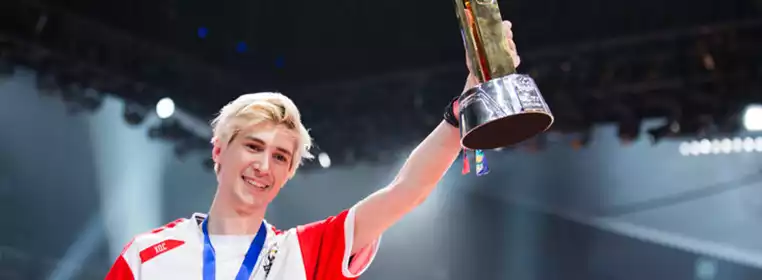
At Blizzcon 2016, the Overwatch League was announced. Touting a city-based infrastructure that was any player’s path to glory, the league became the game’s promised land for any professional player looking to reach world-wide recognition. 2017 proved to be a landmark year for the esport, as teams participated in tournaments across the world like APEX, NA and EU Contenders, APAC, and the Overwatch Premier Series. That year, Lunatic-Hai became back to back APEX champions, Rogue perfected their signature Triple-DPS-Dive style to become one of the best teams in Europe, and during the summertime, the 2017 Overwatch World Cup played out its group stages in four different cities across the globe.
It was certainly a time of hype and excitement for fans of Overwatch esports. With a promising new venture for the game on the horizon, national pride on the line, and the competition fiercer than ever, the 2017 OWWC became the epicentre for a new era in Overwatch esports, and the battleground for players looking to showcase everything they had for a shot at glory.
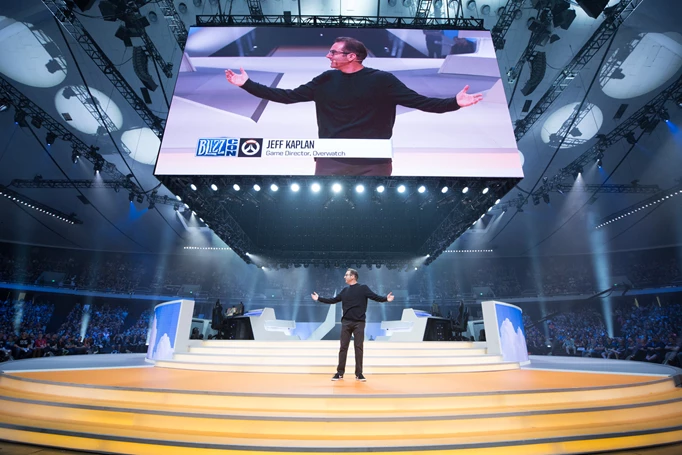
 Click to enlarge
Click to enlargeThe qualifiers were already revisited earlier this year with GGRecon, and each city gave memorable moments and performances that are mandatory viewing for any fan of Overwatch. Former Overwatch caster Erik "DoA" Lonnquist, who travelled to each event in 2017, recalls how each one had its own wonderous atmosphere, and how they all conglomerated to give the final tournament at Blizzcon, an almost unmatched sense of importance.
"Traveling literally around the circumference of the globe (LA to Shanghai to Syndey to Katowice to LA) in the space of five weeks was an unforgettable experience. While we had different talent lineups at different stops, Goldenboy, Malik Forte, Soe, Monte, and I did all of them, and you really couldn't have asked for better travelling partners. It was awesome."
Shanghai featured electrifying matches and 100+ degree humidity. Sydney held the loudest and most passionate crowd throughout the entire tournament run, Katowice remained an ever-evolving and ever-improving hub for global esports. And, of course, nothing beats the L.A sun, a USA win, and DoA gleefully chasing after the legendary Zapdos in Pokémon Go, with his crewmates during rehearsal.
Then came the big kahuna, the final stopping point for a superb summer of qualifiers. The top two countries from each city moved on to battle at Blizzcon 2017, with the main stage games featuring: France, South Korea, Sweden, USA, China, Canada, the United Kingdom, and Australia. Here, the dev team debuted Overwatch’s new observing system, a crucial update that gave spectating a crisper and cleaner look, with new individual team colours to give each game a unique feel, and more connectivity to the participating countries.
But 2017 Overwatch World Cup didn’t just come with pretty new effects, hungry players, and a dedicated eagle eye camera. No, this was the tournament that showcased the game’s biggest balance shift up until that point, the heralding of a hero that would remain a staple of competitive Overwatch even well into 2018. It is, of course, the Mercy-dominated Moth-meta.
Equipped with a new ability, a new ultimate, and an insane amount of utility, Mercy became a virtual must pick everywhere in Overwatch, and especially in this World Cup. Players famous for their skills on Ana, Lucio, or Zenyatta, had to be relegated to playing the moth for their teams because she was just that essential. Standouts like Sebastian "chipshajen" Widlund, Benjamin "uNKOE" Chevasson, and Shane "Rawkus" Flaherty didn’t get to always play their signature heroes, while their support counterparts had to lock in Lucio or play Zenyatta for them.
While the tournament still featured stellar dive trademark moments like pristine Primal Rages, team-wiping Dragonblades, and clutch Pulse Bombs, a lot of the time those efforts were erased, and team fights suddenly became gruellingly longer than they needed to be.
However, this world cup is more than just the first exposure to the almost year-long support meta that would define the inaugural season of the Overwatch League. If one word were to describe the event, it’d be bombastic. Viewers can be treated with some of the best Pharah, Genji, Tracer, and Soldier: 76 gameplay of the times, and it’s certainly a hallmark of pre-Overwatch League gameplay. It isn’t chaotic like the 2016 era of Overwatch, and it isn’t too confined to convention as we would see later on in the game’s competitive lifespan. Every team has a different style and personality, more so than most other non-OWL tournaments. It’s a fantastic showcasing of the players’ and teams’ best styles and prowess on their best heroes, and the following matches are the absolute standouts, you’ll want to revisit.
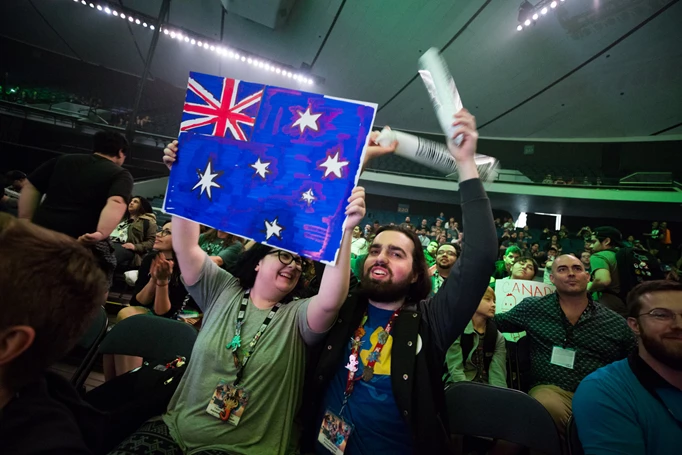
 Click to enlarge
Click to enlargeA Reverse Sweep (Courtesy of Quebec) – CANADA vs AUSTRALIA
A surprising gem of a match, the Quarterfinal between Canada and Australia remains a high octane, wonderful display of different styles and approaches to the game at the time. Coming into Blizzcon, Australia was viewed as a heavy underdog. Their lineup was composed of the starting six for Blank Esports, who at that point were staples of Oceanic Overwatch at the time, but generally unknown among the Overwatch esports community at large. Even though they were only around for one game this tournament, their inherent team-synergy, and great performances for meta-favoured heroes from players like Jordan "Gunba" Graham, Ashley "Trill" Powell, and Ajay "Aetar" Umasankar made for incredibly exciting gameplay.
Canada, on the other hand, they were already the crowd and fan favourites. Playing host to some of the most popular players at the time like, Félix "xQc" Lengyel who had a huge following back then, Brady "Agilities" Girardi widely known for his Genji play on Immortals, and Lane "Surefour" Roberts, "The Candian Superstar" as Mitch "Uber" Leslie would one-day call him. Canada had a lot of star power in 2017 that gave them huge favours with the crowd. It was for good reason too; this tournament was around the time that these players would reach, had reached, or were currently reaching, the best parts of their respective careers. With an eventual second-place finish and a T-Mobile MVP Award for xQc, this became Canada's best performance at a World Cup, and it only elevated the popularity and standing among the general community. It’s a stark contrast and a good reminder for what these players’ best forms were in a time where their futures are somewhat uncertain.
These two teams played it incredibly close, and while the first two maps went Australia’s way, no thanks to some dialup decision making from Canada, it only makes the eventual reverse sweep all the more gratifying and heartbreaking to watch. Australia’s dive and tank line fluidity gave them the edge early on, especially when Canada was relying on their DPS to make plays while also putting them on less-comfortable heroes. Agilities’ Tracer left a lot to be desired, and the team didn’t always necessarily play to their strengths or matched up well against the already established trust between the Australian members.
However, the kings of the North lucked out, as Canada simply had that magical xQc-factor to finally come out on top. The star player for this team definitely had a great match, but it was also Liam "Mangachu" Campbell’s versatility and dedication to being the team’s Swiss-Army Knife that really made Canada’s playstyle so unique. He could perform what he needed to on D.Va and Zarya, and when it really came down to it, his Pharah became the most oppressive force in the server, and really threw a wrench into Australia’s game plan in the latter half of the series. Overall, it’s a great showing from some of the earlier Overwatch personalities, who’s careers in the Overwatch League never really took off, and a good remembrance to the underdogs and forgotten names of team Australia.
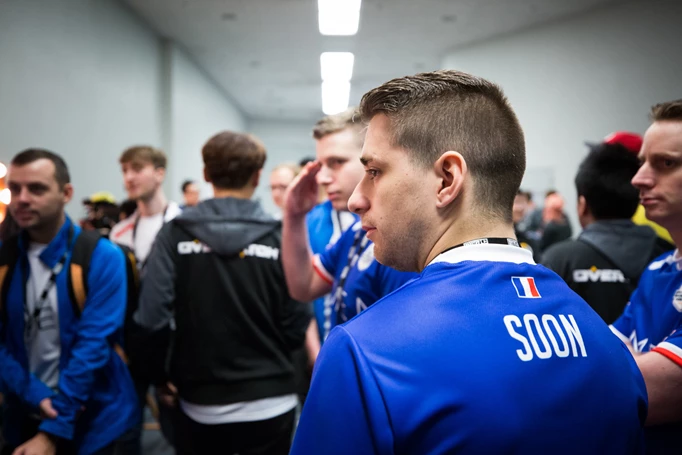
 Click to enlarge
Click to enlargeRogue’s Last Stand – FRANCE vs SWEDEN
The 2017 World Cup also marked the last played match of the landmark European Overwatch team, Rogue. At the time, only two of their players had been signed onto an Overwatch League team, and the rest, their futures were more than just uncertain. This was Rogue’s last chance to play together as a team, to showcase what they had to offer, and really prove that every member deserved a spot in the Overwatch League. It was one final hoorah for the legendary Frenchmen, and what a blaze of glory it was.
This match featured everything fans had come to know and love about Rogue. Terence "SoOn" Tarlier’s signature Tracer and fairly serviceable Junkrat, Dylan "aKm" Bignet’s Soldier:76 or his debut Pharah, and the team even throws in a wrench by having uNKOE play the Mercy instead of Michaël "winz" Bignet, who would play Zenyatta. While this wasn’t the signature Rogue style, it was enough to mark as a good send-off for these legends of the game.
Eventually, aKm and Nicolas "NiCOgdh" Moret would go on to join OWL, but in retrospect, this tournament is a good showcase into why NiCO was such an underrated player for such a long time. Even though primarily he played flex-DPS, he always was the one to adapt and change to whatever Rogue needed. NiCO showcases in his gameplay that his value comes in his role as a teammate, not as a flashy superstar that takes up the kill feed. He plays the Zarya, D.Va, or whatever else the team needed, and he did it with grace. Much like Mangachu on team Canada, NiCO did what was best for his team, not just for himself.
While those heroics and heart-tugging storylines for team France captivated fans, it did nothing to stop the onslaught of Swedish dominance. Sweden were simply just the better players in this meta, an environment where France tried to do their best to make it work, but it simply wasn’t enough. Overwatch veteran Kevin "TviQ" Lindström and wunderkind Simon "snillo" Ekström really hammered in their skill in this match. TviQ performed well on multiple heroes, and snillo proved he could go toe to toe with one of the best Tracers in the game at the time, all while, as DoA reveals, his father watched proudly from backstage. A great match that plays with the heart and soul of some of film’s greatest sports movies, and a good closer for the legacy of the Rogue core.
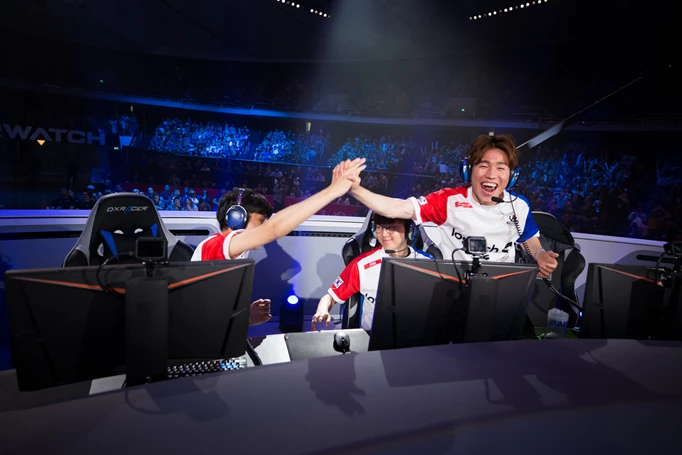
 Click to enlarge
Click to enlargeThe Marquee Matchup – USA vs South Korea
In what could be considered one of the best matches in Overwatch history, South Korea vs the USA is an absolute slobber knocker that knocks the wind out of you even to this day, and is by far the best match of this tournament. After a disappointing loss to South Korea in the 2016 OWWC, USA had to run it back again after getting randomly drawn to compete against SK in the quarterfinals. But this year, team USA had more hype, hope, and confidence than ever before.
At the forefront, you had Jay “sinatraa” Won, a prodigy of the game and a hot commodity after it was reported that the young star had signed with the San Francisco Shock for a $150,000 salary for the first year of the Overwatch League. Known for his world-class Tracer and Zarya, sinatraa became the youthful hope and energy behind USA’s group stage dominance and potential to upset South Korea. His mom was also in attendance backstage, DoA added, cheering on her son as he would begin his next steps into becoming one of Overwatch's most iconic players.
Joining sinatraa would be the All-American Boy himself, Jacob” JAKE” Lyon, an unproven yet incredibly charismatic startup that served as a big potential powerhouse for the USA. Finally, a big player heading into the match was Adam “Adam” Eckel, who was widely considered one of the best Mercy’s in this era of Overwatch, and with the new meta, could certainly be the key to USA’s victory.
Korean super stars like Fl0w3R, Saebyeolbe, and RyuJeHong got to show the world what we were getting to enjoy in Apex back in Seoul.
- Erik "DoA" Lonnquist
However, the hurdle they had to climb was massive. South Korea featured a massively upgraded roster, filled with arguably the best players in this meta of Overwatch. With half the core as members of the recently established New York Excelsior, and the other half being the hotly anticipated Seoul Dynasty, this roster seemed to be one of the greatest South Korea could ever produce. Dong-gyu "Mano" Kim brought a level of main tank consistency unmatched by anyone else in the tournament, and Jong-ryeol "Saebyeolbe" Park gave a huge serving of humble pie to Sinatraa, who was notorious for his skill and his ego. But the real nuclear weapon was Yeon-oh "Fl0w3R" Hwang, who had a once-in-a-lifetime, unrepeatable performance in this game.
Nothing beats watching Fl0w3R bust out Widowmaker on first point Hanamura. In an era where Widow didn’t see much play because of the dive-heavy meta, this was a lot of people’s first time watching someone completely decimate on the hero. This performance and match put Fl0w3R on the map and instantaneously gave him worldwide recognition as one of the most flexible and elite players in the whole world. While he had a great game surrounded by a great team, the crowd going wild for his Widowmaker is a pure amount of bewilderment and excitement that is only seen in a few moments across an esport.
This match between the USA and South Korea is nothing but a banger; in fact, the entire tournament was a banger. It has something for everyone. Great information on the new Mercy rework and how absolutely broken it was, standout performances from fading stars or rising rookies just as the Overwatch League is coming to fruition, and all-around good games in the early days of a meta that lead to a lot of diversity in playstyles.
As DoA, says "2017 World Cup was the best World Cup."
Because if high-octane gameplay, relative hero variance, and compelling storylines are what makes Overwatch esports great, then this tournament serves all of that upon a multi-colour platter.
All images courtesy of Blizzard Entertainment
